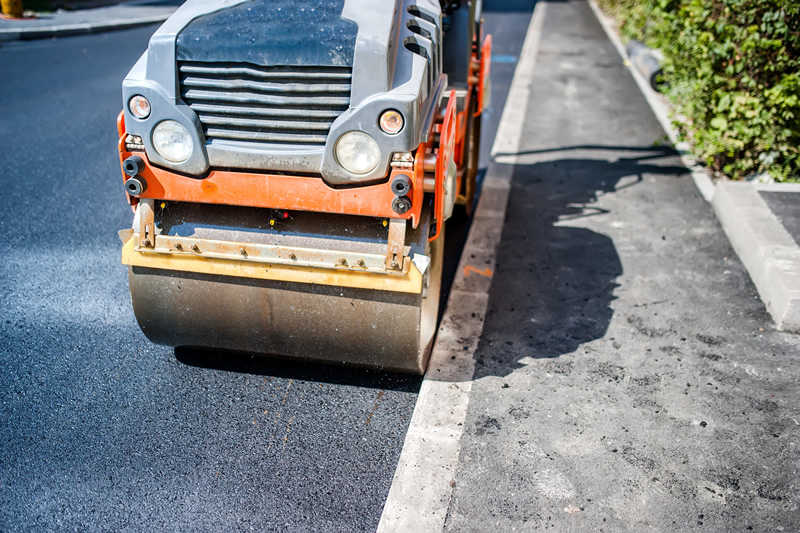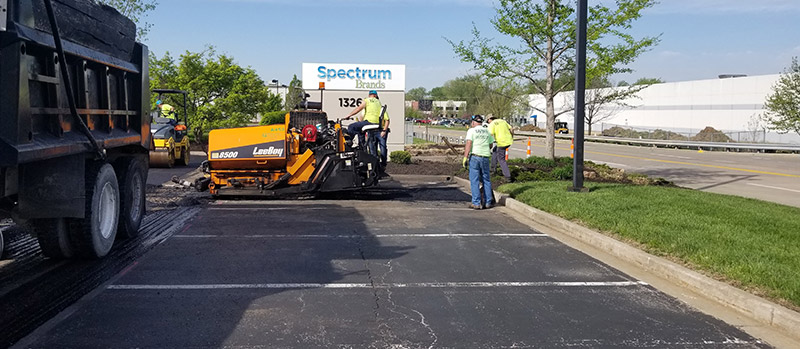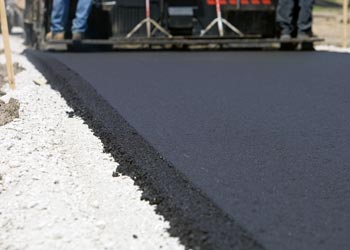7 Simple Techniques For A1 Professional Asphalt & Sealing Llc
7 Simple Techniques For A1 Professional Asphalt & Sealing Llc
Blog Article
Rumored Buzz on A1 Professional Asphalt & Sealing Llc
Table of ContentsThe Facts About A1 Professional Asphalt & Sealing Llc RevealedThe A1 Professional Asphalt & Sealing Llc DiariesFascination About A1 Professional Asphalt & Sealing LlcIndicators on A1 Professional Asphalt & Sealing Llc You Need To KnowThings about A1 Professional Asphalt & Sealing Llc

The oil in a car engine is not simply oil. The REOB consists of all the additives that were in the waste oil as well as the wear metals from the engine (generally iron and copper).
By making many blends using various REOB samples and various asphalt binders, the variations greatly can be balanced out. Numerous States provided samples of recognized REOB make-up to TFHRC scientists, that evaluated the examples to contrast the percent of added (recognized) REOB to the discovered (tested) amount. The analyses revealed a similar percent of included and found REOB.
The 8-Minute Rule for A1 Professional Asphalt & Sealing Llc
They received a frustrating response. The TFHRC researchers evaluated 1,532 examples from 40 States, one Canadian district, and two Government Lands Highway departments. They examined each example twiceamounting to greater than 3,000 evaluations. None of those States understood that the asphalt they were purchasing included REOB. One State urged its examples had no REOB.
Of the 1,532 examples evaluated, 12 percent had REOB, and some contained significantly high levels of it at 1020 percent. The greatest level was 34 percent in a sample from Texas, which TxDOT had used in a patching substance. This testing additionally exposed the presence of phosphoric acid in 11 percent of the examples, and 2 percent consisted of ground tire rubber.
2 years back at TRB's yearly conference, the Federal researchers held an REOB workshop and offered the searchings for of their research laboratory evaluations to a standing room-only group. Although some firms do not specifically ban REOB, they do impose physical examinations that preclude its useeffectively a restriction. a1 professional. Others do not outlaw it by requirements, yet have agreements with asphalt distributors to avoid the use of REOB
The Ultimate Guide To A1 Professional Asphalt & Sealing Llc
Ohio and Texas restriction degrees to much less than 5 percent of the asphalt. To establish a trusted examination approach that all States can make use of, the TFHRC researchers set up a round-robin test plan.
In overall, the researchers prepared and shipped 720 blends. The individuals are examining the samples separately making use of the guidelines offered by the TFHRC researchers. The round-robin screening is virtually finished, and TFHRC is in the procedure of collecting the results. The outcome will certainly be a suggested AASHTO test method that any State can adopt and use (a1 asphalt).
The pavement with REOB, which lies 0.6 mile (1 kilometer) from the pavement without REOB, has similar subgrade, web traffic thickness, and climate. The section of Highway655 with 5 to 10 percent REOB revealed considerable cracking. In this example, the existence of REOB was the recognized reason for splitting at a low temperatures.
A section of examination pavement in Minnesota (MN1-4) discovered to consist of REOB likewise broke too soon. The sidewalk performed well for the very first 3 to 4 years, yet after that started to crack.
A Biased View of A1 Professional Asphalt & Sealing Llc
The tests were not extensive, yet they revealed that at degrees of 6 percent or even more, the tensile toughness of the asphalt dropped significantly. At a level of 3.5 percent REOB, the variation in the physical examination techniques was more than the result of REOB. It was challenging for scientists to analyze whether REOB was present. https://slides.com/a1asphaltseal.

One binder specification considered is the difference between the low temperature critical requirements temperature level for stiffness (S) in the flexing beam rheometer and the bending light beam rheometer creep slope (m-value) noted as Tcritical. Two independent research study groups, one from AASHTO and the other from the Asphalt Institute, wrapped up that even more study is needed on the usage of REOB in asphalt.
Formerly, all asphalt testing measured design buildings such as tightness. These tests do not show what materials had been contributed to the company website asphalt. One example received throughout the TFHRC study had an extremely odd evaluation. The sample had the adhering to examination results: Superpave PG 64-28 with a high temperature level grade of 67.3 Tcritical on the bending beam rheometer was 6.7 degrees Celsius.

A1 Professional Asphalt & Sealing Llc for Beginners
These results demonstrate there are weak points in the standardized engineering screening procedures that might be exploited. The manufacturer may have an economic advantage and the item passes all the standard examinations, but the product may not be useful to making certain long-term efficiency. To address this problem and the growth of brand-new asphalt ingredients and extenders, TFHRC is beginning a research program to utilize handheld spectroscopic gadgets, x-ray fluorescence spectroscopy, and Fourier transform infrared spectroscopy to allow evaluations to be done in the field as opposed to having to take samples back to the laboratory.
Report this page